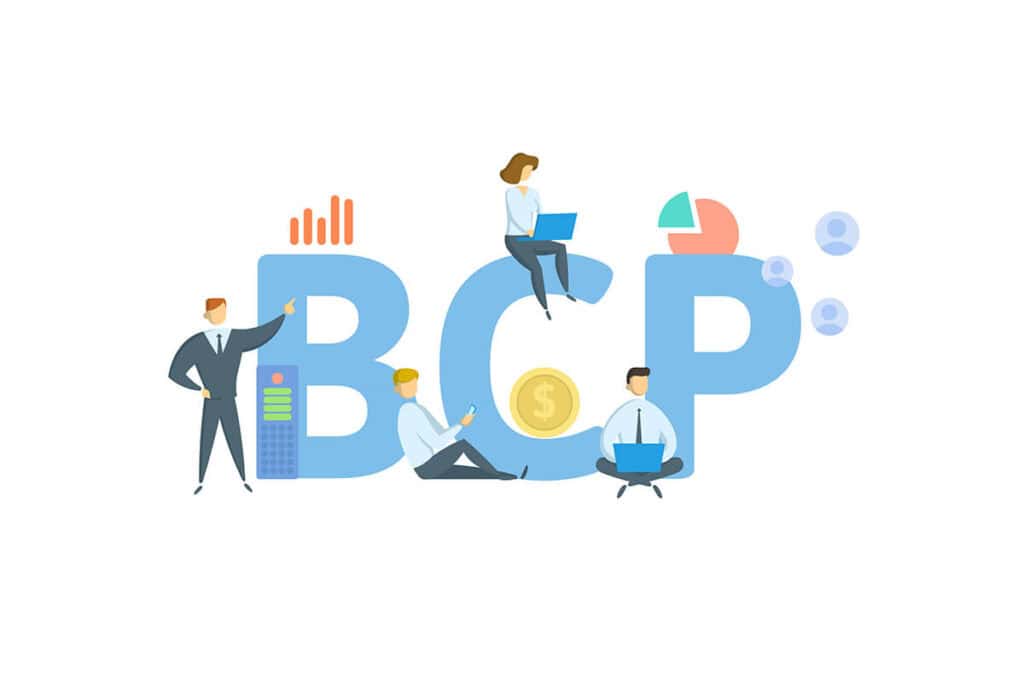Key Highlights
- Business Continuity Management (BCM) software helps organizations develop and implement strategies for maintaining operations during disruptions.
- These tools provide features such as risk assessments, recovery planning, and incident management.
- The top 10 business continuity management tools include Navex One, ParaSolution, LogicManager, Quantivate, Fusion Framework System, Riskconnect, and Archer Resilience Management.
- Each of these tools offers unique features, strengths, and third-party integrations to meet the specific needs of different organizations and industries.
- Deciding on the right business continuity management software for your organization depends on factors such as the scale of operations, specific requirements, existing IT infrastructure, and budget constraints.
Table of Contents
Toggle
Introduction
Every organization should have business continuity management (BCM) in place. Without tools, this can take a lot of effort to implement and maintain – but help is at hand! There is a wide range of business continuity management tools available in the marketplace. These can help you develop strategies and procedures to maintain operations when disasters and disruptions occur. By streamlining business continuity planning (BCP) and assisting in keeping your operations going, tools for business continuity can help you manage disruption – guarding against increased costs, reduced productivity, data breaches, and prolonged downtime.
In this blog, I will explore the top 10 BCM tools that can enhance resilience and protect your business operations. Using unique features, strengths, and integrations of each tool, I’ll cover their capabilities, benefits, and how they support business continuity.

What Are Business Continuity Management Tools?
BCM tools are software solutions that help organizations with their BCM program. Specifically by assisting with designing BCP plans, implementation of the BCM process, running test scenarios, delivering emergency notifications, and managing business disruptions when the unexpected happens.

How Can Business Continuity Management Tools Help My Organization?
A BCM tool can help to identify threats, assess risks, develop mitigation strategies, reduce risks to operations, prevent financial losses, protect stakeholders and your reputation, and ensure compliance with any legislation. It will help you be prepared for when disruptions occur, including severe weather events, power cuts, cyber attacks, pandemics and IT failures.

Essential Tools For Business Continuity Management
Creating a BCM solution is a multi-step process that covers several aspects, including risk assessments, assessing management capabilities, recovery planning, incident management, and performance monitoring. Business continuity management tools can help to implement and manage these processes.
Here are what are considered to be the top 10 business continuity management tools that organizations leverage to enhance their resilience and protect their business operations:

1. NAVEX One: A Comprehensive Risk and Compliance Platform
NAVEX One is a comprehensive platform that provides organizations with the tools they need to manage and mitigate all risks, including those related to business continuity. The platform offers a range of features, including risk assessments, compliance management, incident management, and comprehensive reporting capabilities.
What Does it Cover?
With NAVEX One, organizations can conduct thorough risk assessments to identify potential risks to their business operations and develop mitigation strategies to address them. The platform also enables organizations to monitor and manage compliance with industry-specific regulations and standards. Additionally, NAVEX One provides incident management functionality, allowing organizations to effectively respond to and manage disruptions or crises with the help of a designated response team. With its customizable and flexible tools, NAVEX One is an essential business continuity management tool for any organization.
2. ParaSolution: Leading the Way in Business Continuity Planning
ParaSolution is one of the top business continuity planning tools that can help organizations create and implement effective plans. It offers a flexible, customizable solution tailored to each organization’s needs. With ParaSolution, businesses can automate and streamline their continuity program by centralizing and standardizing BCM activities.

What Does it Cover?
The platform includes modules for BCM, crisis management, IT disaster recovery, vendor risk management, and integrated risk management. ParaSolution ensures reliable BCM execution for agile decision-making, faster recovery, and control during disruptions. It provides streamlined processes and real-time information through its web solution and mobile app.
3. SAI360: Innovating Risk Management Solutions
SAI360 is an innovative risk management solution that offers comprehensive business continuity management software. It helps organizations enhance resilience and recover from disruptions by extending coverage of critical processes, improving communication, adopting a data-driven approach to prioritize activities, and implementing crisis management.

What Does it Cover?
With features like recovery strategy, crisis management, business continuity plans, recovery testing, action management, analytics, and a streamlined dashboard, SAI360 business continuity management tools enable organizations of all sizes to maintain planned maintenance schedules, improve resilience against threats, and enhance readiness for disruptions throughout the entire business continuity management program life cycle.
The platform also includes a business impact assessment feature to assess process criticality and manage risks effectively, including internal audit management. SAI360 empowers organizations to make informed decisions, safeguard business operations, and ensure continuity during disruptions, while also complying with regulatory requirements related to disruption prevention and service continuity, such as ISO 22301 alignment.
Additionally, SAI360 offers real-time analytics, dashboards, and triggered emergency alerts to provide companies with comprehensive visibility into their plans’ performance and operational resilience.
4. LogicManager: Simplifying Governance, Risk, and Compliance
LogicManager simplifies governance, risk, and compliance for businesses by offering tools for risk assessment, mitigation, compliance management, and business continuity. Its features include risk mitigation, compliance management, vendor management, audit management, and environmental, social, and governance (ESG) management.
What Does it Cover?
LogicManager helps organizations create customized business continuity plans, conduct risk assessments, automate workflows, track incidents, and generate reports to support decision-making and compliance.
5. Quantivate: Streamlining Business Continuity with Integrated Tools
Quantivate is comprehensive business continuity software that streamlines planning processes. It offers tools for developing effective plans, managing risks, and ensuring business operations.

What Does it Cover?
Features include risk assessment guidance, critical operation identification, business impact analysis, customizable plan templates for various scenarios, real-time updates, and a mobile app for accessing plans and contact info. Quantivate also provides reporting tools for insights and optional consulting services for expertise in continuity planning.
6. Fusion Framework System: Resilience Redefined
Fusion Framework System is a comprehensive business continuity management solution that enhances resilience. It helps organizations develop effective strategies, manage risks, and ensure minimal disruption to critical operations.

What Does it Cover?
The platform includes features such as continuity planning, exercise management, risk assessment, IT disaster recovery, response planning, and dependency mapping. By using Fusion Framework System, organizations can proactively manage risks and make data-driven decisions to increase resilience and readiness for disruptions.
7. Riskonnect (Formerly Castellan Solutions): The Roadmap to Business Resiliency
Riskonnect (Formerly Castellan Solutions) offers business continuity solutions to help organizations develop effective resiliency strategies. The platform provides features like business impact analysis, incident management, risk assessment, continuity planning, crisis management, and recovery planning.
It supports organizations in managing crises, responding to disruptions, and ensuring continuity. Riskonnect helps in developing comprehensive continuity programs and executing recovery plans for businesses of all sizes and industries.

8. BC in the Cloud: Enabling Efficient Crisis Management
BC in the Cloud is a cloud-based solution for business continuity, enabling organizations to manage crises and recover operations efficiently. The platform includes features like crisis management, disaster recovery, incident management, and reporting capabilities.
Automating business continuity and disaster recovery programs, BC in the Cloud helps organizations plan, prepare, and ensure readiness for disruptions. With minimal training required, the customizable solution streamlines continuity planning processes.
In case of an incident, BC in the Cloud’s mass notification module ensures real-time communication among team members. Centralizing data types enables organizations to analyze impacts, identify gaps, and prepare for challenges.

9. Oracle Risk Management: A Trusted Name in Business Continuity
Oracle Risk Management Cloud provides organizations with effective business continuity and risk management solutions. Key features include risk assessment, repository, audit management, and automated workflows. It helps in assessing and mitigating risks, identifying vulnerabilities, and developing resilience strategies.
The platform aids in regulatory compliance by aligning with ISO 22301 standards. Organizations can create a digital model of operations, stress-test plans against disruptions, and make informed decisions using comprehensive insights and analytics.

10. Archer Resilience Management: Ensuring Operational Continuity
Archer Resilience Management offers organizations a powerful solution for maintaining operational continuity and resilience. The platform includes features like operational risk management, business impact analysis, incident management, and risk assessment. It enables organizations to identify critical processes, develop comprehensive continuity plans, and protect against disruptions.
With integrated risk management in a single platform, Archer Resilience Management promotes accountability across functions and ecosystems. Transitioning from reactive to proactive approaches, the platform helps reduce the impact of disruptions on business operations.

FAQs
What Is Business Continuity Management?
Business Continuity Management (BCM) is a process that enables organizations to identify potential threats to their operations, assess the impact of risks, and develop and implement strategies to ensure the continuous operation of critical business functions. BCM involves conducting business impact analysis, risk assessments, recovery planning, and incident management.
The goal of BCM is to minimize the impact of disruptions on business operations, protect employees and customers, and enable organizations to recover quickly and effectively. BCM is essential for organizations across industries, as disruptions can come in many forms and have severe consequences if not properly managed.

Why Is BCM Important?

BCM has become increasingly important in today’s world due to the growing number of disruptive events like cyber attacks and the need for organizations to ensure the continuity of their critical operations.
BCM involves developing and implementing strategies to maintain business functions during disruptions, such as natural disasters, cyber-attacks, IT failures, or other emergencies. It encompasses emergency response planning, risk assessment, recovery planning, and incident management.
Organizations need to be prepared to respond effectively and efficiently to these disruptions to minimize downtime, financial losses, and potential damage to their reputation. BCM software plays a crucial role in this process by providing tools and functionalities that enable organizations to plan, prepare, and respond to these events.
What Is in a Business Continuity Plan?

An effective business continuity plan consists of several key components that work together to minimize downtime and mitigate the impact of disruptions.
- Risk Assessment: A thorough risk assessment helps identify potential threats and vulnerabilities that could affect the organization’s operations. This includes analyzing internal and external risks and their potential impact on critical processes.
- Business Impact Analysis (BIA): BIA involves assessing the potential consequences of disruptions on critical operations. It helps determine the recovery time objectives (RTOs) for each process and prioritize them based on their criticality.
- Recovery Strategies: Once the risks and impacts are identified, recovery strategies are developed to enable the organization to recover and resume operations within the defined RTOs. These strategies may include backup and recovery solutions, alternative work locations, or contingency plans.
- Testing and Exercising: Regular testing and exercising of the business continuity plan are crucial to identify any gaps or weaknesses in the plan. This helps ensure that the plan is effective and can be executed smoothly during an actual disruption.
Evaluating Business Continuity Management Tools: A Buyer’s Guide
When evaluating business continuity management tools, organizations need to consider several factors to ensure they choose the right solution for their needs. Here are some key considerations to keep in mind:
- Features and Functionalities: Assess the capabilities of the software, such as risk assessment, recovery planning, incident management, and reporting. Look for features that align with your organization’s specific requirements.
- Ease of Use: Consider the user interface and ease of navigation. The software should be intuitive and user-friendly to facilitate adoption and ongoing use.
- Scalability and Integrations: Ensure the software can scale with your organization’s needs and integrate smoothly with existing IT infrastructure and systems.
- Customer Support: Evaluate the level of customer support provided by the software provider. Look for prompt and reliable support, including training and implementation assistance.
- Reputation and Track Record: Research the software provider’s reputation and track record in the industry. Read reviews and testimonials from other users to gauge their experience and satisfaction.

Conclusion
In today’s fast-paced world, ensuring business continuity is paramount. Business continuity management tools can make all the difference between failure and success. From comprehensive risk assessments to crisis management, these tools offer a strategic edge for smooth operations and resilience in times of uncertainty. Selecting the appropriate tool that aligns with your organization’s needs is crucial. By implementing best practices and measuring impact, you can safeguard your business against disruptions effectively. Explore these essential tools to fortify your business continuity strategy and stay ahead in the game.






